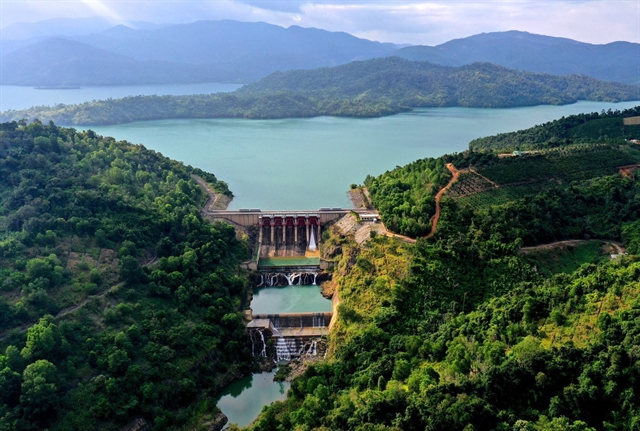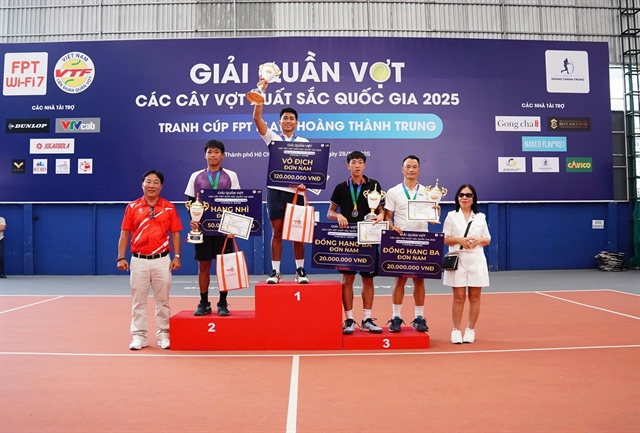 Environment
Environment

Vietnam News Agency speaks to Đào Trọng Tứ, head co-ordinator of the Việt Nam River Network (VNR), on the role of social organisations and civic groups in improving the awareness and actions of the community regarding water security issues

|
| Hàm Thuận-Đa Mi hydropower project, situated on La Ngà River of the south-central province Bình Thuận. — VNA/VNS Photo Ngọc Hà |
Vietnam News Agency speaks to Đào Trọng Tứ, head co-ordinator of the Việt Nam River Network (VRN), on the role of social organisations and civic groups in improving the awareness and actions of the community regarding water security issues
How do you assess water pollution and water resources degradation in Việt Nam at present?
Việt Nam is blessed with thousands of rivers, streams, lakes and various water bodies of various sizes. This is a valuable source of freshwater for human life and socio-economic activities.
Việt Nam is not a country with a critical scarcity of water, but not one rich in water either. The country faces a double challenge – serious depletion of water resources due to uncontained exploitation and degradation due to pollution.
A recent report from the Ministry of Natural Resources and Environment showed that water quality in the country is under severe stress from pollution and toxic substances from urban areas, industrial zones and agriculture. Most waterways through cities are heavily polluted, for example, Hà Nội has six so-called 'dead rivers'. Underground water is also being exploited with little restraint. Water management in Việt Nam is also lacklustre and wastewater recycling has not been paid due attention.
Solid waste discharge in urban areas is threatening surface water quality, given that there are many illegal dumping sites or landfills of questionable standards, causing leachate to enter water sources. Out of about 600 active major landfills in the country, only 203 comply with standards while the rest lack leachate collection or management protocols.
There has been a substantial increase in pollution from agriculture. Each year, Việt Nam uses about 11 million tonnes of fertiliser – 90 per cent of which are chemical types and only 10 per cent organic. An average of 195-200kg of fertiliser is applied on every hectare, varying between types of crops, crop variants, locations, types of land or usage patterns. Vietnamese farmers use more fertiliser than recommended levels and only 40-50 per cent of the used amount is actually seen as effective while the rest is washed away into waterways as fertiliser runoff.
Climate change is also compounding water resources issues, with international forecasts stating water flow will shrink by 5 per cent if temperatures increase by 1.5 degrees Celsius. With global warming, polar ice caps will melt and sea-level rises will hit, causing saltwater to intrude further into low-lying delta regions, further endangering freshwater sources. All of these issues threaten to degrade water resources.
Implementation of the water resources law has seemed ineffective, especially at the local level. What are the causes of these problems?
Generally speaking, Việt Nam has a quite substantial legal framework on national water resources – including the Law on Water Resources (2012), the Law on Environmental Protection (2014, with a new draft soon to be discussed and approved by the National Assembly this year), and many other related laws and sub-law documents – that could really help protect, manage and develop this critical resource if they are effectively implemented. But the reality is that water pollution remains rampant – and seems to get worse by the day – which means legal enforcement is lacking.
The environment ministry has said that while each ministry and agency has a role to play in management and protection of water resources, there are usually overlapping responsibilities and weak co-ordination once getting down to specifics.
Worse, each ministry and sector develops water resources planning based on the requirements of their own field, leading to conflicts in the exploitation of water resources, exacerbating water shortages and pollution.
For example, the Ministry of Agriculture and Rural Development is in charge of irrigation planning, the Ministry of Industry and Trade hydropower power planning, and the Ministry of Transport waterway development. The conflicts arising between the need for protection against flooding and the need to release water to generate power, between generating power and ensuring enough water for crops, between generating power and releasing water for downstream use and repelling saltwater intrusion, etc. are hard to balance.
The World Bank has pointed out that the biggest problem is that existing river basin organisations – river basin management boards and river basin environmental protection committees – lack sufficient authority due to overlapping responsibilities and constraints regarding institutional capacity, resources and finance.
What can we do to ensure there is enough clean water for the public?
Water is a fundamental factor in the existence and development of a nation, but it’s limited and vulnerable to degradation.
Take Israel for example, it’s not a country blessed with abundant water resources but has still managed to become one of the world’s top high-quality agricultural produce exporters. They see water as important as blood.
Therefore, in Việt Nam, all levels of government and every person must be aware of the significance of water resources, so they see the need to protect them.
Việt Nam needs to consolidate its legal framework and have institutions strong enough to better manage water resources and improve legal enforcement capacity. both in terms of human resources and equipment and tools, for authorities from the central level to grassroots level.
Can you tell us about the Việt Nam River Network (VRN)’s activities?
As an open forum for all stakeholders – from non-governmental organisations, researchers and academics, to officials working in State agencies, local communities – concerned about the sustainable development of rivers and water resources, VRN has 300 members.
The network strives to improve the members’ skills related to researching, monitoring and evaluation of river quality and river issues. Our findings from 26 small studies on river and hydropower topics have been shared with relevant government authorities and policymakers.
VRN works with scientists, media and press to raise public awareness about the impacts of hydropower development and river pollution on the livelihoods of communities and natural ecosystems.
VRN has served as an independent voice in the making of environmental impact assessment, in the monitoring of the safety compliance during the implementation of hydropower projects in Việt Nam funded by World Bank and Asian Development Bank, and in the promoting civil society’s role in the revised Law on Water Resources. — VNS




